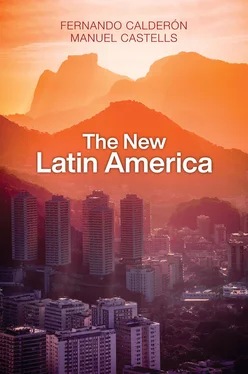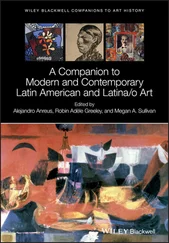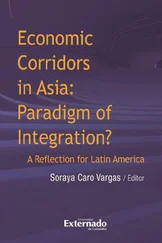Moreover, in a globalized world, national identity has forcefully reemerged as a means by which to resist the force of history and to reassert the rights of those who live in delimited territories, and who cannot become “citizens of the world” because they do not have the resources to do so. At the same time, however, these people feel themselves to be in solidarity with the planet and their fellow human beings, without thereby wanting to lose the protection of the national institutions that remain available to them.
Caught between globalization and identities, the nation-state is beset by the onslaughts of history. In general, the nation-state seeks to integrate itself into globalization in order to maximize its access to wealth and power, forming transnational networks. In the process, the distance between the state and the nation grows, as does the distance between global imperatives and local representation. Hence the repeated emergence of a longing and ultimately a politics that seek to regain control of the nation. These register the people’s responses to the flight of their elites, after the latter become members of a club run by the owners of the world, by networks of power and capital that operate in a space of flows that have become increasingly abstracted from those who seek to maintain control over their restless subjects.
In this conjuncture, the mechanism by which the state relates to its citizens – that is, the political system – has also been beset by the onslaughts of recent history. On the one hand, the institutions of liberal democracy, which were constantly subverted in the twentieth century by military coups generally supported by the United States, became the rule in Latin America during the last decade of that century. We note the possible exception of Cuba (which was not a liberal democracy, but whose government enjoyed a certain kind of popular support) as well as the range of opinions about other regimes in the region, such as those in Venezuela, Nicaragua, Guatemala, and Honduras (which were formally liberal democracies but with diminishing levels of support from their citizens). In any case, at the turn of the millennium, Latin America appeared to have reached a phase of democratic stability after centuries of blood, sweat, and tears shed in order to reach this point. But the current crisis of political legitimacy and state corruption in the vast majority of Latin American countries has, in just a few years, destroyed the minimal confidence that formerly bound those who govern to the governed, leading to a fragmentation of society and calling into question both neo-populist leaders and the deceptive facades of electoral democracies. The why and how of these processes are the objects of our investigation in this book.
In the end, however, beyond the economy, technology, and institutions, there are people’s lives. And for the vast majority of the population, the new Latin America, even with a considerable improvement in basic indicators of human development – including education, health, and (mainly informal) employment – is marked by damage to the natural habitat caused by destructive metropolises. This Latin America is also marked by an urbanization driven by speculation, a process that affects 80 percent of the population. It is marked, moreover, by a toxic environment, by the destruction of the region’s marvelous ecology, and by violence and fear as forms of life, while criminal gangs teem everywhere, killing, destroying, and intimidating millions of people, often enabled by the passivity or the complicity of those charged with providing protection.
This new Latin America is made up of light and shadows, but the light has increasingly faded, and the shadows already envelop the lives of countless people. This leads to the emergence of new kinds of individual awareness, prompting a search for collective alternatives that might yet make another Latin America possible. Hence our determination to observe and acknowledge the new historical territory in this book – because it is only by acknowledging where we are that we can know how we might get to where we want to be.
1 THE GLOBALIZATION OF LATIN AMERICA From the Crisis of Neoliberalism to the Crisis of Neo-developmentalism
Since the end of the twentieth century, Latin America has experienced a process of profound transformation. In order to understand this process, it is necessary to attend to different levels of human development and to local contexts of growth, while also bearing in mind the considerable internal differences that result from the specific situations of various countries, that is, from their different social structures, cultures, and institutions as well as from their different relationships to the global system. Latin America’s transformation is the result of two opposing socioeconomic models, their ascent, and their crises. By “neoliberalism,” we mean a model of growth and distribution based essentially on the dynamics of the market, supported by the state. In what we call “neo-developmentalism,” by contrast, the state is the motor of economic growth and the mechanism for the distribution of products; it actively intervenes in market processes and in the creation of infrastructures, though without fully nationalizing the economy.
In terms of economic growth, in the first decades of the twentyfirst century, the region as a whole has modernized its productive structure, increased its competitiveness in the global economy, and modified its traditional patterns of dependency on the United States. Growth in annual gross domestic product (GDP) (in constant prices) was 4.5 percent on average between 2003 and 2008. This growth did slow to 3.0 percent between 2009 and 2011, due to the impact of the economic crisis of 2008 in the United States and Europe. Between 2012 and 2013, growth slowed again to 2.3 percent. During the period between 2014 and 2015, the real rate of growth in the region was just 0.5 percent, and in 2016 it was negative (−1.1 percent). Still, for the first time, despite its thorough integration into the global economy, Latin America was more successful than the United States or Europe in combating the effects of an economic crisis, the crisis of 2008; it effectively disengaged itself from the crisis that unfolded in these other world regions.
Obsessed with oil production and considered by many to exemplify bad economic management, Venezuela grew at an average rate of 7.5 percent between 2003 and 2008. Then, during the years between 2009 and 2011, the country had a negative rate of growth (−0.2 percent), only to recover between 2012 and 2013 (when growth reached 3.5 percent). In 2014, the last year for which information was available at the time of writing, Venezuela’s GDP fell by 3.9 percent in real terms. For its part, Argentina grew at an average rate of 8 percent between 2003 and 2008, and at a rate of 3.4 percent between 2009 and 2011, whereas between 2012 and 2013 growth was just 0.7 percent, and between 2014 and 2015, it fell to 0.1 percent. The country’s economy then contracted another 1.8 percent in 2016 (ECLAC, 2018).
In Brazil, as in Argentina and Venezuela, the period between 2003 and 2008 was the period of greatest real growth (4.2 percent on average), followed by the years from 2009 to 2011 (3.8 percent). From this point, the rate of growth slowed to 2.5 percent between 2012 and 2013, and it then fell again to 1.5 percent and 3.5 percent in 2014–15 and 2016, respectively. Mexico’s economy grew by an average of 2.6 percent between 2003 and 2008 before then seeing its rate of real growth slow to 1.2 percent between 2009 and 2011, only to recover to reach 2.5 percent between 2012 and 2013. In 2014–15, the rate of growth of Mexico’s GDP rose to 3.0 percent, and it slowed slightly to 2.9 percent in 2016 (ECLAC, 2018). The economies of Bolivia and Peru grew by around 6 percent between 2012 and 2013. To sum up, then, between 2003 and 2013, Latin America lived through more than a decade of sustained economic growth and increased competitiveness.
Читать дальше












